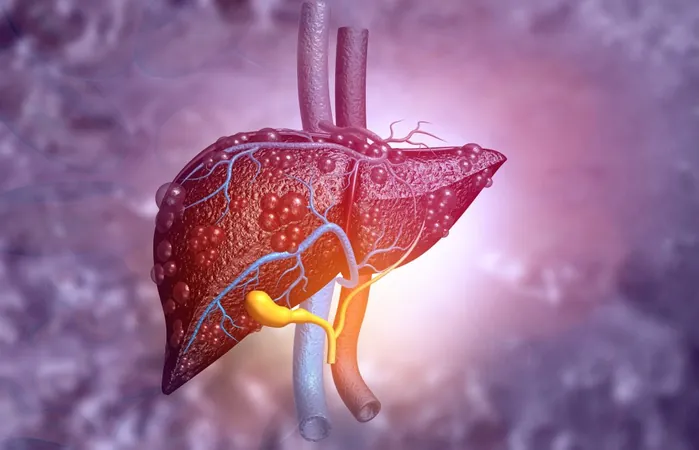
Revolutionary Discoveries in Huntington's Disease: Can We Regrow Lost Neurons?
2025-04-10
Author: Mei
A New Perspective on Brain Recovery
The adult brain has long been viewed as a completed jigsaw puzzle—once cells go missing due to neurodegenerative diseases like Huntington's Disease (HD), it seemed there was little hope for recovery. However, groundbreaking research is turning this assumption on its head by revealing that we may indeed be able to grow new neurons in the adult brain, specifically targeting those lost to HD.
Understanding the Loss: What Happens in Huntington's Disease?
To grasp the significance of this research, it's crucial to understand what HD does to the brain. The disease wreaks havoc on a brain region known as the striatum, pivotal for controlling movement, emotions, and decision-making. The primary victims in this region are medium spiny neurons (MSNs), essential connectors in the brain's motor circuitry. Their loss leads to impaired movement, cognitive issues, and emotional instability.
Sowing the Seeds for New Neurons
A daring study by Dr. Steve Goldman and his team at the University of Rochester aimed to address this neuron loss directly. They set out to stimulate the adult mouse brain to regenerate specific neurons that resemble the lost MSNs. By utilizing two critical proteins—brain-derived neurotrophic factor (BDNF) to promote growth, and Noggin to guide stem cells towards becoming neurons—researchers created an ideal environment for neuronal regeneration.
Illuminating New Growth
In a surprising twist, they employed a genetic technique to make the newly formed neurons glow, allowing them to pinpoint where new cells were being created and confirm their MSN similarity. Mice treated with BDNF and Noggin exhibited a substantial increase in glowing cells within the striatum, showcasing molecular markers unique to MSNs.
Creating Connections: Are the New Neurons Functional?
But merely forming new cells wasn't enough. Just like a puzzle, these neurons needed to connect with the appropriate parts of the brain. Researchers used a modified rabies virus to trace incoming signals and discovered that newly formed MSNs were indeed interfacing with brain areas such as the motor cortex and thalamus, indicating that they were well-integrated into existing circuits.
From Passive Cells to Active Participants
Not only were these new neurons connecting, but they were also functioning. Using cutting-edge techniques, scientists confirmed that these cells could send and receive electrical signals like mature MSNs. This is a substantial find; it means these neurons aren’t just placeholders—they are actively participating in the brain's processes.
A Game-Changer for Movement
The pivotal question arose: could these neurons improve movement in the affected mice? Utilizing chemogenetics to activate the new MSNs, researchers observed increased activity levels in HD model mice. This finding doesn't just hint at cosmetic improvements; it indicates a genuine enhancement in motor function, akin to finding essential pieces of a jigsaw puzzle to recreate the picture.
Hope on the Horizon for Huntington's Disease Families
While this study does not yet offer a treatment for HD, it represents a radical shift in thinking. The implication that adult brains can regenerate functional MSNs and integrate them into crucial neural circuits offers newfound hope. Although the newly-formed cells will also carry the HD gene, their developmental youth may delay disease onset, presenting a tantalizing possibility for extending the health and lifespan.
The Future is Bright
As researchers dig deeper, they aim to address the challenge of ongoing neuron loss, likely requiring repeated treatments. The initial findings in adult mice, even with severe HD models, suggest that the right cell population remains responsive to regenerative therapies. Though there's still a long road ahead, this emerging research opens doors to previously unimaginable treatments for families impacted by Huntington's Disease.
Stay tuned; the puzzle isn’t complete, but we may finally have the tools to craft new pieces and fit them into place.



 Brasil (PT)
Brasil (PT)
 Canada (EN)
Canada (EN)
 Chile (ES)
Chile (ES)
 Česko (CS)
Česko (CS)
 대한민국 (KO)
대한민국 (KO)
 España (ES)
España (ES)
 France (FR)
France (FR)
 Hong Kong (EN)
Hong Kong (EN)
 Italia (IT)
Italia (IT)
 日本 (JA)
日本 (JA)
 Magyarország (HU)
Magyarország (HU)
 Norge (NO)
Norge (NO)
 Polska (PL)
Polska (PL)
 Schweiz (DE)
Schweiz (DE)
 Singapore (EN)
Singapore (EN)
 Sverige (SV)
Sverige (SV)
 Suomi (FI)
Suomi (FI)
 Türkiye (TR)
Türkiye (TR)
 الإمارات العربية المتحدة (AR)
الإمارات العربية المتحدة (AR)